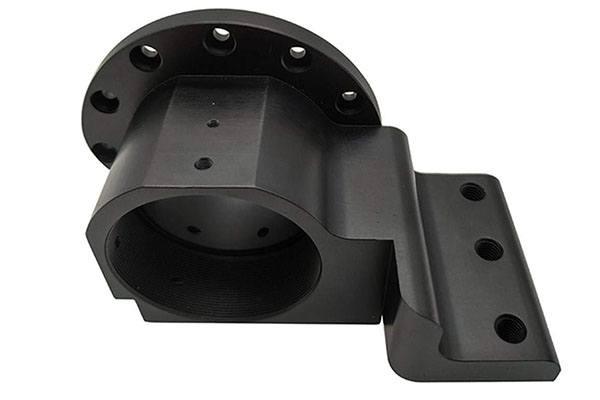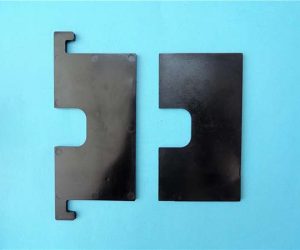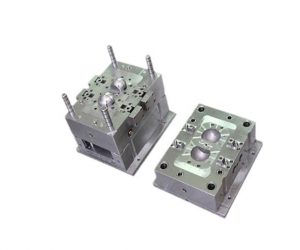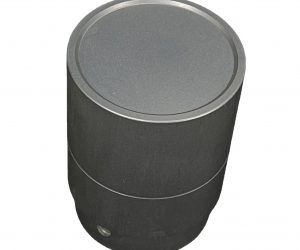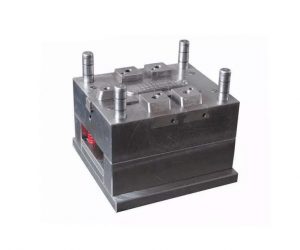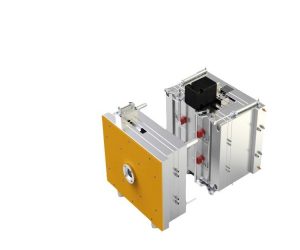1. Introduction to Innovative CNC Milling Projects
In the fast - evolving landscape of modern manufacturing, Computer Numerical Control (CNC) milling has firmly established itself as a linchpin of precision engineering. This technology empowers manufacturers to produce intricate, high - tolerance components with remarkable accuracy, finding applications across a diverse range of industries, from the aerospace sector's demand for lightweight yet robust parts to the medical device industry's need for customized, precision - crafted implants.
What sets innovative CNC milling projects apart is their pursuit of more than just basic functionality. These projects serve as showcases of mastery, achieved through the application of advanced techniques, in - depth material expertise, and outstanding problem - solving capabilities. They are at the forefront of pushing the boundaries of what is possible in CNC milling, leveraging the latest technological advancements and engineering creativity.
2. Precision Redefined: Advanced Materials and Complex Geometries
2.1. High-Precision Mold Steel Processing with Double-Head Milling
One standout innovation is the use of double-head milling machines, such as those developed by GooDa Machinery, to tackle the intricate demands of mold steel processing. Traditional single-head machines often struggle with uniformity and efficiency when machining large or multi-faced components, leading to increased setup times and potential inconsistencies. Double-head systems, however, feature dual spindles that operate simultaneously, enabling parallel processing of two surfaces or components. This reduces cycle times by up to 40% while maintaining precision within ±0.001mm, a critical requirement for molds used in automotive and consumer electronics. For Yigu Technology example, in producing injection molds for smartphone casings, double-head milling eliminates the need for repositioning workpieces, ensuring seamless integration of micro-features like intricate textures and ultra-thin walls (as thin as 0.3mm) without compromising structural integrity.
A comparison between single - head and double - head milling machines in mold steel processing is shown in the following Yigu Technology table:
| Aspect | Single - Head Milling Machine | Double - Head Milling Machine |
| Cycle Time | Longer, due to sequential processing of surfaces. Can take up to 10 hours for a complex mold. | Up to 40% shorter. For the same complex mold, it can be completed in about 6 hours. |
| Precision | Usually within ±0.01mm, which may not be sufficient for high - end molds. | Maintains precision within ±0.001mm, meeting the strict requirements of automotive and consumer electronics molds. |
| Setup Time | Longer, especially for multi - faced components as workpieces need to be repositioned. | Significantly reduced as two surfaces can be processed simultaneously, eliminating some repositioning steps. |
| Ability to Handle Micro - features | Difficult to ensure seamless integration of micro - features due to repositioning errors. | Can accurately machine micro - features such as ultra - thin walls (0.3mm) and intricate textures without compromising integrity. |
2.2. Aerospace - grade Titanium Alloy Machining
Aerospace applications demand components that balance strength, lightness, and resistance to extreme conditions, making titanium alloys like Ti - 6Al - 4V ideal yet notoriously difficult to machine. Innovative projects here focus on overcoming titanium’s low thermal conductivity and high chemical reactivity, which can cause tool wear and heat - induced deformation. Leading manufacturers employ high - speed CNC milling with specialized carbide tools and cryogenic cooling, reducing cutting temperatures by 300°C and extending tool life by 50%. For instance, a project to machine a titanium aerospace structural bracket with intricate internal channels and thin webs (wall thickness ≤1mm) utilized 5 - axis CNC technology to achieve a surface finish of Ra 0.8μm, far exceeding industry standards. The process integrated real - time vibration monitoring to eliminate chatter, ensuring dimensional accuracy within ±0.02mm even for complex curved surfaces.
To better understand the impact of cryogenic cooling in titanium alloy machining, consider the data in the Yigu Technology table below:
| Machining Parameter | Conventional Machining | Machining with Cryogenic Cooling |
| Cutting Temperature | Around 800°C, which can cause rapid tool wear and material deformation. | Reduced by 300°C, down to about 500°C, significantly improving tool life and part quality. |
| Tool Life | Short, usually only lasting for about 10 hours of continuous machining before needing replacement. | Extended by 50%, lasting approximately 15 hours, reducing tool change - over time and costs. |
| Surface Finish (Ra value) | Typically around 1.2μm, which may not meet the high - end aerospace requirements. | Achieves a surface finish of Ra 0.8μm, providing a smoother surface for better aerodynamic performance. |
| Dimensional Accuracy | ±0.05mm for complex curved surfaces, which is relatively low for aerospace components. | ±0.02mm, ensuring better fit and function of the final parts in the aerospace assembly. |
3. Automation and Efficiency: Streamlining Production with Turnkey Solutions
3.1. Smart Factory Integration in Mass Production
Innovative CNC milling projects now prioritize seamless integration with Industry 4.0 technologies, creating automated, lights-out manufacturing environments. Companies like GooDa Machinery deploy turnkey solutions that combine CNC machines with robotic arms, automated tool changers, and IoT-enabled monitoring systems. For example, a mass production line for automotive transmission components features 20 interconnected 5-axis machining centers, each equipped with AI-driven predictive maintenance software. This setup reduces unplanned downtime by 70% and increases material removal rates by 25% through optimized cutting parameters. A comparative Yigu Technology table highlights the efficiency gains:
| Parameter | Traditional Setup | Innovative Turnkey Solution | Improvement |
| Cycle Time per Part | 45 minutes | 28 minutes | 38% |
| Tool Replacement Time | 15 minutes | 3 minutes (automatic) | 80% |
| Scrap Rate | 5% | 1.2% | 76% |
3.2. Rapid Prototyping for Iterative Design
In the medical device industry, where custom implants and surgical tools require tight tolerances and rapid turnaround, innovative CNC milling projects leverage hybrid manufacturing systems that combine subtractive and additive processes. For a cranial implant project, engineers used a 5-axis CNC mill to finish a titanium alloy structure printed via 3D laser powder bed fusion. The milling stage refined the implant’s curved surface to match patient-specific CT scans, achieving a fit accuracy of ±0.05mm. This hybrid approach reduced prototyping time from 14 days to 5 days while ensuring biocompatible surface finishes (Ra ≤0.4μm), critical for osseointegration.
6. Conclusion: The Future of Mastery in CNC Milling
Yigu Technology Innovative CNC milling projects stand as a testament to the remarkable progress and mastery within the manufacturing domain. These projects are not just about creating parts; they are about redefining the limits of what can be achieved in terms of precision, complexity, and efficiency.
As we have seen, the use of advanced materials and complex geometries has enabled the production of components with features that were once thought to be beyond the reach of CNC milling. The adoption of double - head milling for mold steel processing and the development of specialized techniques for machining aerospace - grade titanium alloys have opened up new possibilities for industries such as automotive, consumer electronics, and aerospace. These advancements have not only improved the quality of the final products but have also made the manufacturing processes more efficient, reducing both time and cost.
Automation and the integration of Industry 4.0 technologies have also played a crucial role in the evolution of CNC milling. Smart factory integration and turnkey solutions have streamlined production lines, reducing human error and increasing productivity. The ability to monitor and optimize machining processes in real - time, along with the use of predictive maintenance, has minimized unplanned downtime and ensured the smooth operation of manufacturing facilities. In the medical device industry, the combination of CNC milling with additive manufacturing for rapid prototyping has revolutionized the development of custom implants and surgical tools, allowing for faster iteration and better patient - specific solutions.
FAQ
- Q: What is the main advantage of double - head milling in mold steel processing?
A: The main advantage is a significant reduction in cycle times (up to 40% shorter) and higher precision (maintained within ±0.001mm), enabling the seamless integration of micro - features and eliminating the need for repositioning workpieces.
- Q: How does cryogenic cooling benefit titanium alloy machining?
A: Cryogenic cooling reduces cutting temperatures by 300°C, extends tool life by 50%, improves surface finish to Ra 0.8μm, and ensures dimensional accuracy within ±0.02mm for complex curved surfaces.
- Q: What are the key benefits of Industry 4.0 integration in CNC milling?
A: Key benefits include reduced unplanned downtime (by up to 70% in some cases), increased material removal rates (by 25% in certain setups), and improved overall production efficiency through optimized cutting parameters and automated processes.
